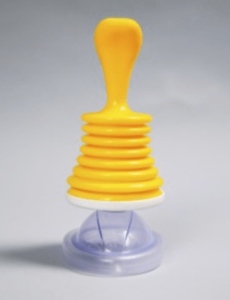My first year out of fellowship I was working in the emergency department one afternoon. It was actually fairly quiet – a rare occurrence on a winter day. Suddenly a mother rushed in with her one year old son who was alert, but his cry sounded hoarse. That afternoon, his older sibling thought it would be fun to put a large screw in his brother’s mouth – routine sibling entertainment. We rushed him back into the resuscitation room. Fortunately, he was alert and breathing. The screw and nail were luckily in his mouth and had not obstructed his airway.
Airway obstruction is one of the more frightening things to manage. A critical part of pediatric resuscitation is managing the airway which can be really hard when the airway is blocked by a hot dog. I am writing about choking, because with all the holiday candies, small toys, and button batteries, choking is an even bigger concern this time of year.

Choking is the leading cause of morbidity and mortality in kids 3 years of age and under. According to the AAP, the most common food culprits include:
Hot dogs
Nuts and seeds
Chunks of meat or cheese
Whole grapes
Hard or sticky candy
Popcorn
Chunks of peanut butter
Chunks of raw vegetables
Chewing gum
These items should not be given to children under 4 years of age. Also make sure that you keep button batteries away from children. Button battery ingestion can cause some serious damage to the esophagus and gut (but more on that in a separate article).
Make sure that toys are safe and are age appropriate. Latex balloons and gloves are a significant choking hazard as well and can completely block a child’s airway.
I always recommend taking an infant and child CPR class to refresh your basic life support skills. Here is a useful youtube link from the Children’s Hospital of Orange County that demonstrates choking management in infants and children:
A new device to help treat choking is the LifeVac. The LifeVac uses suction to remove a foreign body from a blocked airway. LifeVac was developed when a physician, Dr. Lih, found that the Heimlich maneuver was ineffective in resuscitating a child who choked on a grape. Below is an image of the LifeVac which is available in adult and pediatric sizes.
In order to use the LifeVac effectively, you need to create an effective seal between the mask and the face (similar to using an ambu-bag in airway resuscitation). So far LifeVac claims that 9 lives have been saved with this device.

You can learn more about this device on the website https://lifevac.net.
Looking for something specific? Write to Dr. Audrey Paul and let her know what topic you're interested in learning more about.
Get in touchLooking for something specific? Write to Dr. Audrey Paul and let her know what topic you're interested in learning more about.

